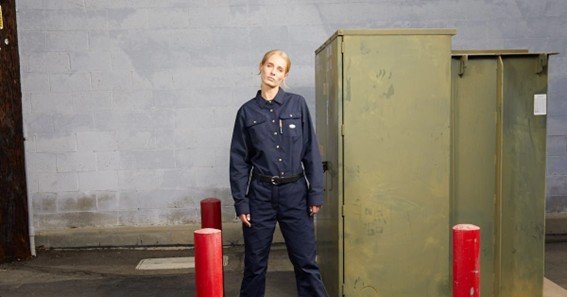In many industries—such as oil and gas, welding, and electrical services—staying protected on the job is crucial. When it comes to women’s FR clothing, the right gear must balance flame-resistant (FR) compliance with a fit designed for a woman’s body. In this blog post, we’ll explore what to look for in women’s FR clothing, discuss key safety standards, and provide tips for selecting garments that excel in both comfort and protection.
Why Women’s FR Clothing Matters
-
Proper Fit for Better Protection
-
Ill-fitting FR clothing can compromise safety. Women’s FR apparel is cut to accommodate varied body shapes without adding extra bulk that might snag on equipment.
-
-
Regulatory Compliance
-
Industries with fire or arc flash hazards often require employees to wear FR garments that meet standards like NFPA 2112 (for flash fire) or NFPA 70E (for arc flash).
-
Women’s FR clothing is designed and tested according to the same stringent regulations as men’s, ensuring equal levels of protection.
-
-
Comfort and Mobility
-
FR fabrics have come a long way from being stiff and heavy. Modern blends offer breathability, moisture-wicking capabilities, and ease of movement.
-
A well-fitted garment reduces fatigue, as women don’t have to constantly adjust baggy or overly tight clothing.
-
-
Professional Appearance
-
Manufacturers recognize the need for functional yet stylish workwear. Women’s FR clothing now comes in various cuts, colors, and designs, helping professionals feel confident and put-together on the job.
-
-
Extended Garment Life
-
Quality FR garments are typically made from durable materials that withstand frequent laundering.
-
By selecting high-grade apparel, you minimize the need for frequent replacements, ultimately saving money.
-
Essential Features to Look for in Women’s FR Clothing
-
Certifications and Labels
-
Confirm that the garment meets recognized safety standards, such as NFPA 2112, NFPA 70E, or ASTM F1506. Look for clear labels or documentation.
-
-
Fabric Technology
-
FR fabrics can be inherently flame-resistant (the fibers themselves are FR) or treated (a chemical treatment is applied). Both can be effective, but always ensure they meet industry requirements.
-
-
Breathability and Moisture Management
-
Look for garments with built-in moisture-wicking properties. This helps maintain a comfortable body temperature in challenging work environments.
-
-
Construction and Seams
-
Reinforced seams, double stitching, and sturdy closures (like FR-rated zippers or snaps) are vital. Such details ensure the garment stays intact during critical moments.
-
-
Layering Options
-
Some jobs demand multiple layers of FR clothing. Check if the piece you’re considering can integrate easily with other layers (e.g., FR undershirts or jackets).
-
Tips for Choosing the Right Women’s FR Clothing
-
Measure Correctly: Take accurate body measurements or consult size charts specific to the brand.
-
Test the Fit: Whenever possible, try on garments to ensure ease of movement in bending, lifting, and reaching motions.
-
Evaluate Your Environment: If you work in a hot climate, prioritize lightweight fabrics; for colder areas, look for FR outerwear or garments that can layer well.
-
Look for Brand Reputation: Established brands often provide robust customer support, warranties, or easy returns.
-
Mind Your Budget: Balancing quality and cost is essential. Cheaper FR garments may save money upfront but can wear out faster, raising long-term expenses.
FAQ
-
Q: Does women’s FR clothing cost more than men’s?
A: It can be slightly more expensive due to lower production volumes and specialized cuts. However, the difference is often minimal, and the improved fit can significantly boost safety and comfort. -
Q: Can I layer regular clothes under my FR garments for extra warmth?
A: It’s safest to layer with FR-rated base layers. Non-FR clothing can ignite and continue burning, negating the protective benefits of your outer FR gear. -
Q: How often do I need to replace my women’s FR clothing?
A: Replacement depends on usage frequency, the garment’s condition, and manufacturer guidelines. Signs like holes, fraying seams, or diminished flame resistance are indicators to replace. -
Q: Are treated FR fabrics less effective than inherently FR fabrics?
A: Both can provide dependable protection as long as they’re certified and properly maintained. The key is to follow the manufacturer’s care instructions to preserve the FR properties. -
Q: Is it okay to tailor or alter women’s FR clothing?
A: Alterations can compromise the garment’s safety if not done correctly. Consult with the manufacturer or an FR-certified tailor to ensure modifications do not affect compliance.










